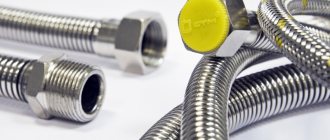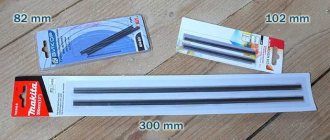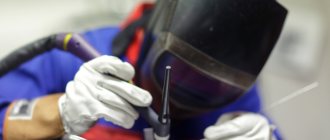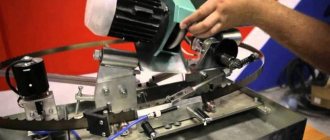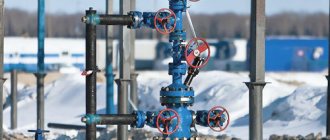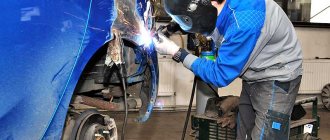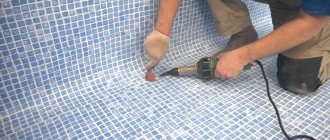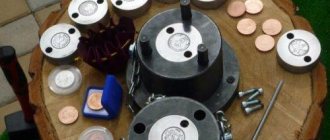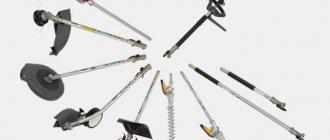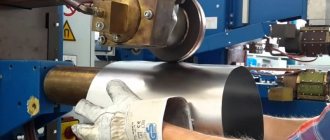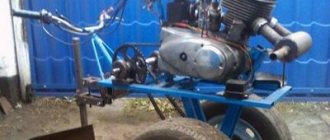It is well known that the installation of gas equipment (taking into account the significant rise in price of gasoline along with a decrease in the quality of this type of fuel) has been practically the only opportunity for many years to significantly reduce the costs of operating a gasoline engine.
Today, various generations of gas equipment can be found everywhere on carburetor and injection cars. If we talk about the injector, not only mono-injection engines and engines with distributed injection can be converted to gas, but also power units in which fuel is supplied directly to each cylinder (direct injection).
As for the carburetor, although this type of internal combustion engine is very outdated, there are still quite a lot of similar machines in the CIS for a number of reasons. At the same time, HBO has been installed on engines with a carburetor for a long time and is a proven solution. It is important to understand that the key to proper operation is high-quality adjustment of gas equipment on a carburetor engine (Lovato, Tomasetto), etc.
More precisely, on such motors the main task is to correctly configure the evaporator gearbox. Next, we will talk about how to configure the gas reducer of a car with a carburetor, as well as what features and nuances need to be taken into account in order to achieve optimal results.
HBO adjustment 4th generation
The fourth generation operates using electronics, which detect engine heating, the number of revolutions, sends impulses to the gearbox, controls the movement of the injectors and the performance of the fuel supply system.
Correct setting of gas equipment allows you to synchronize the functioning of the fuel system components and not interfere with the operation of the gasoline ECU (electronic control unit). There are no universal tuning indicators, since the operation of the gas system is influenced by:
- gas quality;
- intensity of fuel consumption;
- filtration efficiency;
- carbon deposits on pipe walls.
It is important to set the correct HBO parameters. It is not possible to do this yourself without special knowledge and skills.
Therefore, it is recommended to contact a professional specialized car service for tuning.
In the process of setting up the 4th generation HBO, the following actions are performed:
The outgoing reduction pressure is adjusted because the standard level of 1 atmosphere is not suitable for every car. Therefore, adjustments are made on an individual basis. To increase engine power at high speed (from 150 km/h), it is necessary to increase the pressure by 0.1-0.3 atm. Parameterization of the fuel map is carried out together with calibration. Suitable parameters are determined based on the quality of the combustible mixture. Low-quality fuel has a negative impact on consumption. Nozzles of a certain diameter are selected for injectors. Poorly fitted parts may not function effectively. The cylinder float is adjusted to the optimal gas pressure level
It is important to choose the right place to install the cylinder. As a rule, it is mounted instead of a spare wheel in the luggage compartment of a car.
In most cases, it is enough to correctly configure the main system nodes. Complete rules for adjusting HBO can consist of 50-page instructions.
Disadvantages of gas heating on cylinders
Like any other heating method, this one also has its drawbacks:
- if the cylinder is located outside, in the event of severe frost the system may turn off - the condensate will freeze and will prevent the gas from escaping;
- Cylinders should not be placed in unventilated areas;
- Since the gas is heavier than air, if there is a leak, it can go down (to the basement, underground), and if the concentration is strong, serious consequences will arise.
Thus, heating using gas cylinders can be very dangerous if certain conditions are not met. Therefore, they need to be stored only in ventilated areas without a basement. It is even advisable to place them in a separate extension on the site. The room must be warm so that the system does not shut down in cold weather. If the extension is cool, you will have to make an insulated metal or plastic box for the cylinders. To insulate the walls, they are lined with foam plastic 5 centimeters thick. Ventilation holes must be made in the lid of the box.
Principle of operation
The 4th generation gas installation operates on this principle.
The electronic control unit is connected to the wiring between the standard fuel system control unit and the gasoline injectors.
The signal coming from the block to the injectors is read by the gas system control unit and, based on this signal, the amount of gas required to be supplied to the cylinder at a given moment is calculated.
After this, the signal is transmitted to the gas train. The gas in it is constantly under a certain pressure, which it received from the gas reducer.
The signal received at the ramp causes the valve to open using an electromagnetic injector, and gas enters the intake manifold.
This signal will also close the injector valve, which ensures high accuracy of fuel supply.
As a result, it turns out that the fuel system is controlled by a standard electronic control unit based on lambda control sensors.
The gas equipment control unit only converts the signal from the standard unit to the requirements that are necessary for the normal operation of the gas power plant.
This is the peculiarity of the 4th generation HBO.
Direct type gearbox
When the gas mixture passes through the inlet of the fitting and enters the high-pressure cavity, pressure is generated, with the help of which the valve opens. Thanks to the locking spring, the pressure reducing valve is pressed
directly to the seat, thereby eliminating the possibility of gas mixture entering under high pressure.
The main use of the membrane is, if necessary, it removes the reducing valve from the seat, which leads to a decrease in the pressure of the gas mixture and gas entering the chamber at normal operating pressure. Under all conditions, two opposing forces act on the membrane:
- The action on the part of the pressure spring that is necessary to open the valve itself.
- Action from low pressure gas coming from the reducer chamber.
When the pressure of the gas mixture in the working chamber decreases, the spring begins to straighten without feeling any resistance, and the valve begins to open, leaving the seat and accordingly opening the way for a new flow of blue fuel. As the pressure increases, the pressure spring, on the contrary, begins to compress, and the valve is pressed even more tightly against the seat, which in turn limits the penetration of the gas mixture into the gearbox.
The adjustment screw is required to calibrate the operating normal pressure. It affects the compression stroke of the spring itself. When unscrewing the screw, the normal operating pressure will decrease, and when tightening it, just the opposite, it will increase.
Installed pressure gauge
directly on the working chamber will allow you to control the pressure at any time of the day. It should be noted that in everyday life, direct-type gearboxes for gas cylinders are not in great demand and have not found wide application.
Adjustment and repair of Lovato gas reducer
In gas-cylinder equipment, the gearbox is given the greatest importance among all components. Its task: to provide the driver with the opportunity to reduce the pressure coming from the cylinder. Repair, namely adjustment, on a car gearbox involves working with one or two regulators: this is the main difference.
In principle, a gas reducer is a primitive pressure regulator designed to independently maintain a standard pressure value based on fuel consumption. As practice shows, the device supports it with minor fluctuations. The pressure decreases slightly with increasing gas flow. This is not a very significant point, but requires attention.
Manufacturer's offer
Lovato gearbox
The Lovato gearbox design is characterized by versatility, simplicity and reliability. For Turkish artisanal producers, the manufacturer is a role model. Almost all generations of Turkish gearboxes have adopted the design of a flattened “drum”, at the ends of which there are two stamped covers. belongs to a family-type enterprise that was founded in the post-war period in conditions of acute fuel shortages. In modern conditions, Lovato is one of the leaders in the global gas cylinder system market. Repair, namely adjustment, of Lovato analogues depends on the following factors:
- mechanism generation;
- number of regulators;
- fuel system.
Manufacturer product range:
- Lovato propane vacuum reducer for 90 and 140 kW. The device is intended for 1st generation LPG systems on carburetor-type cars with a power of up to 123 horsepower. The reducer is intended exclusively for conversion to propane.
- Lovato electronic propane reducer 90, 140, 170 kW. The device is intended for 1st, 2nd and 3rd generation HBO systems on cars of injection, mono-injection and carburetor types with engine power up to 123 horsepower. The reducer is designed for propane-butane.
- Lovato methane gearbox. The 2nd generation device is used for converting cars and buses to methane fuel.
Gear settings
Repair, namely adjustment, of the gearbox requires orientation in its settings. Propane analogues usually have two regulators, but there are also one. Methane type gearboxes are almost always characterized by one regulator. In their management, these settings are the most problematic.
Repair for the gas generation of gearboxes with one unique setting involves manipulation exclusively with the pressure of the transmitted gas. Vehicle owners with particular enthusiasm prefer to “tighten up” the pressure themselves
Having set the only correct and, what is very important, true pressure value, the fuel reducer alone will make it possible to limit gas consumption at operating power due to an element called the greed screw
Repair has some difficulties when the screw is in the “closed” position. To maintain idle speed in this case, it is necessary to increase the pressure, the process of which involves:
- Checking the gearbox before tuning, namely, whether the “greed screw” is open.
- After the previous stage has been completed, adjustment work can begin.
Lovato gearbox design
Adjustment process
The Lovato gas regulator itself is presented in the form of a screw compressing a spring. In order to install it, you should consider:
- when tightening, the gas supply will be reduced by the reducer;
- when unscrewing, it will grow.
Sometimes screws are found with left-hand threads, most often they are right-hand threads. This moment depends on the designer’s imagination of the manufacturer. To simplify this task slightly, it is necessary to take into account: with any rotation it is characterized by the above characteristics of changes in gas pressure.
Adjusting the idle speed on vehicles is explained by the degree of engine shaking. His calm work indicates that the gearbox repair was carried out competently and efficiently.
So, start the engine and hold the throttle open. Then we smoothly release it and slow down until the power unit stalls. At the same time, do not forget the condition: the gas reducer of the car engine must continue to work. For “dummies”, an explanation: the engine will not stall completely if you start twisting the throttle valve in an arbitrary direction. If worse motor performance is observed, you will have to change the direction of rotation of the gearbox and restore its stable operation.
Classification of gearboxes
All automatic pressure calibration devices can be divided into two types:
- reducers for flammable gases (propane, hydrogen, methane, etc.);
- for inert gases (nitrogen, helium, argon, etc.).
Different threads are cut into gearboxes so that the buyer does not confuse the type. Gearboxes designed to operate with inert gases
, are equipped with a right-hand thread, and with flammable gases they have a left-hand thread.
Gearboxes with oxygen are used when performing work related to soldering, cutting and gas welding. This type of gearbox is also used in medical institutions and even during underwater diving.
Gearboxes designed to work with acetylene are used for cutting pipes and gas welding. This gearbox is widely used at technical stations. service and in auto repair shops when performing straightening and welding body repairs.
Gearboxes designed to work with propane
, are used when performing work related to cutting, gas welding and heating. In everyday life, this reducer has become very widespread when using cylinders in houses with no gas mains.
This gearbox has also become widespread in construction, in particular, when laying roofs using bitumen shingles.
Reducers designed to work with air are used to reduce air pressure in pipelines and various air lines; they are also necessary on underwater vessels.
Features of gas equipment
Manufacturers in our country and abroad offer consumers the fifth generation of LPG, however, car enthusiasts prefer the time-tested system of the previous version. This is due not only to the high cost of the newer system, but also to its maintainability and testability in different situations.
A modern 4th generation gas installation can be installed on various types of vehicles:
- a car;
- trucks;
- minibuses;
- public transport;
- commercial vehicles, etc.
There are two main types of systems you can find on the market:
- Compressed (CNG). Compressed natural gas (methane CH4) is used.
- On liquefied petroleum gas (LPG). In kits, propane and butane (C3H8 and C4H6, respectively) are used individually or in mixtures.
It is generally accepted that methane will be more dangerous. Even a small amount of this chemical can cause rapid poisoning, blindness, suffocation, etc. in humans. The gas molecule is smaller than that of the gas pump, so it requires thicker-walled and highly sealed gas pipelines, containers, etc.
Benefits of using HBO
First, let's look at the advantages of installing fourth-generation gas equipment, and there are several of them, but they are important:
- Cost of gas (significantly less than gasoline);
- Consumption (in new generations of gas equipment, gas consumption is slightly higher than gasoline consumption);
- The gas contains no unnecessary impurities (which can be found in gasoline);
- Less deposition of combustion products inside the combustion chambers (affects the life of the power plant);
- When the car is fully refueled (with both gasoline and gas), the range will significantly increase.
With such a significant number of positive qualities, there is also a negative.
Self-installation of HBO 2
It is not difficult to install gas equipment on a car yourself if you follow safety precautions and have knowledge of installing such devices.
Stages of installation of gas equipment for 2nd generation gas:
- installation of a cylinder;
- gas main wiring;
- installation of a mixer and dispenser and control unit for gas equipment;
- testing work on the tightness and performance of gas equipment.
Before starting installation, check that all gas equipment is available:
- gas cylinder (cylindrical or toroidal);
- multivalve;
- gasoline and gas electric valves;
- filling valve;
- mixer;
- control panel and wires;
- gas hoses and tubes;
- tees;
- clamps.
Description of step-by-step instructions for installing gas equipment:
- Cylindrical cylinders are mounted in trunks. In hatchbacks, a good option for installing a toroidal cylinder is in the spare tire niche. It is better to install methane on large cars, for example, Gazelle, where there is room for a bulky container.
- Fix the filling valve on a bracket under the rear bumper, on one of the rear fenders or in the trunk of the car.
- Lay the gas line from the cylinder to the engine compartment along the bottom of the body. The fuel line must not pass through the passenger compartment. The hole for the gas line outlet is made with a larger diameter than the pipeline in order to insert a protective rubber or plastic seal into it. The edges are treated with anticorrosive.
- A gas line is fixed along the bottom. You can place the gas pipeline next to the gasoline pipeline in the niche provided for this.
- The next step is to install a mixer between the carburetor and the intake manifold of the car. Tightness is achieved using O-rings and sealant to prevent air leaks. If this is not done, traction will be lost and jerks and dips will occur when the engine is loaded. Typical for the Solex carburetor, its modification DaAZ 21073–1107010 is installed on the Niva.
- The next operation is to install a gasoline electric valve in the fuel pipeline between the gasoline pump and the carburetor.
- Install the gas valve.
- The gas line is connected to the valve.
- A gas reducer is mounted next to the carburetor.
- Connect the gearbox to the pipes that lead to the car's heater. The 2nd generation Lovato gearbox performed well in Russian winter conditions.
- The line from the shut-off valve is connected to the installed gearbox.
- A gas dispenser is installed between the reducer and the mixer.
- The LPG control panel is installed in the cabin and connected.
To perform a test run of HBO, the cylinder needs to be filled with approximately 10 liters. The pipeline is blocked. A soap solution is applied to the line connections. Perform gas inlet and inspect the joints. Bubbles will appear in areas of leakage. If it is not possible to immediately eliminate the causes by tightening the clamps, the gas pipeline is shut off and the connections are redone.
Before operating the LPG, it is necessary to check the effect of the anti-pops on the injector. If the gas pressure exceeds, the firecracker will prevent the gas mixture from exploding.
If the leaks are not eliminated, the consequences of such operation of the car are increased fuel consumption, engine shutdown, gas poisoning, and even an explosion. If in doubt, it is better to set up and service the gas equipment in a specialized service center. The address of the station where gas cylinder installations are serviced can be found on the Internet.
Application of cylinders made of composite materials
This type of cylinders is a new product among containers working with gases. Unlike other cylinders, composite cylinders have greater safety and lighter weight. When a composite container explodes, no harmful fragments are formed
.
Cylinders made of composite materials also have anti-corrosion properties. This property gives a huge advantage during operation. Do not forget that a number of increased requirements are put forward for containers made of composite materials.
The main task of a household gas regulator when working with composite containers is to constantly maintain a stable operating pressure at the outlet within the range you specify. Gas regulators paired with cylinders of this type must comply with EN 12864 (European standard).
As an example, you can use a device of the A300i - A310i brand
, the difference from the usual domestic RDGS 1 - 1.2 is as follows:
- It is equipped with a nut that can be tightened without much effort;
- longer service life of the gasket under the valve itself, which is approximately 10 years;
- To the design difference we can add the placement of a circle-shaped bead in the valve seal and the presence of a recessed spout in the outlet hole. These design features are necessary for high-quality sealing of the connection during assembly.
The regulator can be used either as a universal type or as a cylinder made for a specific model and made of composite materials. The optimal option, of course, is to buy a regulator and a cylinder from the same manufacturer.
What does the equipment consist of and how does it work?
2nd generation LPG (propane or methane) is used in cars with injection and carburetor engines. Such equipment is best suited for cars up to the 3rd environmental class (Euro 0,1,2). Starting from Euro 3, it is more rational to install the 4th generation of gas equipment.
Device on the carburetor
The second generation kit includes:
- filling valve;
- gas cylinder with multi-valve and level sensor;
- filling, consumable lines;
- reducer with a coarse filter (sometimes a remote filter with a solenoid gas supply valve);
- fuel type selection button;
- gas mixture dispenser (power register);
- device for mixing gas with air (mixer);
- an electromagnetic valve that blocks the access of gasoline to the power unit when switching it to gas.
The operating principle of 2nd generation equipment on a carburetor engine is as follows:
The engine starts and warms up using gasoline. Next, the key is moved to the neutral position to produce fuel from the carburetor float chamber. Thus, the solenoid valve is activated, which shuts off the gasoline supply.
After which the switch is set to the gas supply position, activating the gas valve. So the gas, which is in a liquid state in the cylinder, flows through the multivalve and the main pipeline to the reducer. At this stage, the mixture undergoes preliminary rough cleaning.
When the gearbox warms up from the engine coolant, the liquefied gas is converted into steam. In the vapor phase, the fuel, passing through the power register, mixes with air in the carburetor.
Then the finished gas mixture, entering through the intake manifold and cylinder head valves, is ignited by a spark in the combustion chamber of the engine cylinder.
To switch back to base fuel, the LPG button is moved to the position of working on gasoline, bypassing the neutral position.
Diagram on engines with injector
Here the equipment differs in several components:
- the button is specifically for the injection system, but there are also universal ones;
- a mixer with an anti-popping mechanism is installed in front of the throttle valve;
- petrol injector emulator;
- lambda probe emulator (installation is not required on all machines).
There are no radical differences in the operating principles of both gas equipment schemes. Major changes have been made to the design of the gas equipment due to the presence in a car with an injector of injectors for supplying fuel (or a mono injector - one nozzle for all cylinders). Which are controlled by the standard engine control unit (ECU).
The engine can switch to gas in semi-automatic mode (middle position of the toggle switch). Until the engine reaches a given number of rpm (1500-2000), gasoline is supplied to the combustion chamber. Then the switch to gas occurs automatically.
An injector emulator is needed to turn off gasoline injectors; it also sends a signal to the controller (ECU) simulating their operation. Due to this, the control unit does not display an error (“check engine”) about non-working injectors through an alarm on the instrument panel.
The lambda probe emulator (oxygen sensor) blocks the engine control unit from outputting a false error about a lean fuel mixture. Sensor advantages:
- facilitates setting up HBO due to the display of an indication of the quality of the mixture (poor green, rich red);
- reduces gas consumption by an average of 7-10%;
- allows you to detect real errors in engine operation.
Due to possible malfunctions in the ignition system (missing sparks) or gas distribution mechanism, popping noises occur in the engine. The reason for this is the ignition of fuel in the intake manifold, which can lead to its rupture.
The second generation gas equipment is equipped with an “anti-pop” valve, which is installed in the gas mixer or may be additional in the air filter housing.
Reverse gearbox
When the gas mixture passes from the cylinder directly into the working chamber, the valve is compressed, which prevents the gas mixture from flowing further from the reducer. The gas supply can be calibrated with a special adjusting screw, which, when unscrewed, compresses the release spring and, accordingly, bends the rubber membrane. Then, under the influence of forces, the transfer disk is pressed onto the surface of the return spring, followed by its squeezing, which leads to the lifting of the valve and the flow of the gas mixture into the working chamber.
Simultaneously with the increase in pressure in the gas system, the pressure in the working chamber also increases, as a result of which the membrane is leveled
under the influence of a compressed release spring. Then follows the lowering of the transfer disk, which, accordingly, acts directly on the return spring, which forcefully presses the valve into the seat.
As a result of these processes, the supply of the gas mixture from the gas pipeline or cylinder to the working chamber is reduced; accordingly, when the pressure of the gas mixture in the cylinder decreases, a controlled reverse reaction is started. This is how an automatic gearbox system works.
Operating principles of gearboxes in various generations of gas equipment
Despite the fact that the principle of operation of the GBO gearbox of generations 1, 2, 3 and 4 is subordinated to a single task, the equipment of the device varies depending on the generation. The unloading compartment locking methods and settings are also different.
1st generation gearbox
In the 1st generation there was a vacuum device of a mechanical type. The membrane plate responded to the vacuum in the intake manifold, to which an additional line was extended. When the engine started, the carburetor began to draw in fuel, the pressure dropped, and the vacuum valve opened the way for fuel. The engine was turned off, the pressure returned to normal and the fuel inlet was blocked. The device was adjusted simply: by mechanical rotation of the greed screw. These are the main differences in the operating principles of the gas reducer of the 1st and 2nd generations.
The operating principle of the 2nd generation gas reducer has evolved. Now this is not a vacuum, an electronic device
An important addition: it is equipped with a solenoid intake valve controlled by the power unit. This ensured an automatic response of the device to starting the car engine. The solenoid valve supplies gas based on impulses from the oxygen sensor
This is the main advantage of an electronic type device, since older carburetor engines do not always have enough vacuum for the membrane to work.
In the 3rd and 4th generations of HBO, this device is simplified in design. Some options have been transferred to the collector. There is no need for a large number of membrane partitions. For a split injection system, 2 stages and one solenoid valve are enough.
The number of sensors has become larger in number. A complex design filter device was added to ensure gas purification.
The mechanism has become more convenient to configure. The electronic control unit is connected to the laptop. A special program is launched that performs configuration and diagnostics. Devices from the brands Tomasetto and Lovato are easy to adjust.
The operating principle of the gas pressure reducer must be taken into account when choosing this device
Pay attention to what generation it belongs to, whether it has dust and moisture protection. Power characteristics should be with reserve
But the dimensions must correspond to the area that can be allocated to the device in the engine compartment.
Read further:
Gas reducer Lovato: classic gas equipment
Gas reducer Tomasetto AT-07: trust in the classics
Gas reducer KME Silver: stable gas pressure without loss of power
How is the Lovato gearbox adjusted on an injector?
Gas valve Lovato: purpose, design and principle of operation
Purpose of the cylinder propane reducer BPO 5-2
The BPO 5-2 propane reducer is used to reduce and stabilize the pressure of household gas supplied from standard cylinders to consumers such as welding torches and cutters, heaters and a large number of other types of consumers.
Design and principle of operation of the propane reducer BPO 5-2
This propane reducer is built according to a single-chamber design; at the inlet it has a pipe with a threaded union nut for connection to the cylinder. The body is cast from aluminum alloy, the body cover is made of polyamide.
https://youtube.com/watch?v=eXophZ3QC3M
A special feature of the propane reducer is its small size and weight, which makes the BPO 5-2 convenient for transportation and storage.
Technical characteristics of propane reducer BPO 5-2
The propane reducer is produced by the oldest manufacturer of gas equipment in the country -:
Technical characteristics of gearboxes
- Weight 0.34 kg.
- Length × width × height 135 × 105 × 96mm.
- Operating temperature -15+45˚С.
- Maximum inlet pressure 25 kg/cm3.
- Working pressure 3 kg/cm3.
- Maximum gas consumption, 5 m3/hour.
- Connection method W 21.8-14 threads per 1″ LH.
- Working connection M16x1.5 LH.
Complete set of propane gas reducer BPO 5-2
Package Included:
- Propane reducer assembly.
- Technical certificate.
- Nipple for sleeve 6.3 or 9 mm.
- Package.
Safety precautions when working with propane reducer BPO 5-2
Propane is a source of increased danger. In order to consciously follow safety requirements, you need to understand exactly what threats the gas itself and the devices that use it pose:
Safety precautions when working with propane reducer BPO 5-2
- First of all, propane is flammable. Improper handling can cause a serious threat to the life and health of people, as well as material values.
- You can't breathe propane. A person dies in a propane atmosphere. If small amounts are inhaled, it causes poisoning, causing headaches and vomiting.
- Propane is explosive under certain conditions; when a certain concentration of propane in the air is reached, a volumetric explosion occurs. An explosion also occurs when the temperature in the cylinder rises sharply.
- When propane quickly leaks from a cylinder into the atmosphere, a strong drop in temperature occurs, which can lead to severe and deep frostbite.
Rules for working with a propane cylinder
To avoid these unpleasant consequences, the following rules must be observed when working with propane:
- Do not handle propane near open flames or high heat.
- Do not bring other flammable substances into the work area.
- Do not use materials that are chemically incompatible with propane, such as nitrates and perchlorates, near propane.
- Do not use gas equipment and fittings that have visible mechanical damage and signs of gas leakage.
Operating rules for propane reducer BPO 5-2
The operating rules contain, first of all, requirements for strict compliance with the safety measures listed above.
Each time before starting operation, it is necessary to inspect the propane reducer, connecting fittings, and supply hoses for mechanical damage and visible and audible signs of leakage. If such signs are detected, it is unacceptable to begin operation; damaged equipment must be repaired or replaced.
Rules for operating a propane reducer
If the pressure gauge needle does not move or, on the contrary, jumps at a constant gas flow rate, it is faulty and must be replaced.
It is also necessary to carefully monitor the timing of the scheduled verification of the pressure gauge of the propane reducer for compliance with the passport technical requirements. Such verification must be carried out by a special certified organization at least once every five years.
In addition, it is necessary to follow the procedure for connecting the propane reducer to the cylinder and to consuming devices. At least once a month you need to check the condition of the filter and clean it if necessary.
What is gas equipment
GBO is gas-cylinder equipment. It is a gas installation that powers the engine instead of conventional fuel. Gas can be of two types - propane or methane. In practice, they differ little (except for the state of aggregation), but in terms of price and storage they still have slight differences.
LPG for a passenger car
There are several types of HBO:
- First;
- Second;
- Third;
- Fourth;
- Fifth generation.
The higher the generation, the more advanced the system (more sensors and electronics are used, everything is calculated more accurately and the operating efficiency is higher). But the generation of HBO is selected depending on the type of engine and it is not always possible to use the 5th generation installation on an old engine.
Design and types
Propane (CH 3) 2 CH 2 is a natural gas with a high calorific value: at 25°C its heat of combustion exceeds 120 kcal/kg. At the same time, it should be used with special precautions, since propane is odorless, but even with its concentration in the air of only 2.1% it is explosive. It is especially important that, being lighter than air (the density of propane is only 0.5 g/cm3), propane rises upward, and therefore, even at relatively low concentrations, poses a danger to human well-being.
The two-stage pressure regulator for bottled gas has a pre-pressure dependence of 0.05%, so no adjustment is required when pre-pressure fluctuates.
- Single stage pressure regulator for bottled gas.
- Bottle connection on the left side.
- Pre-pressure in the bottle is 300 bar.
The extraction point pressure regulator serves to regulate compressed, liquefied and pressurized dissolved gases from the supply networks with a certain pre-pressure to the desired operating pressure, virtually independent of the pre-pressure or the number of quantity fluctuations, as far as possible.
A propane reducer must perform two functions - provide a strictly defined level of pressure when connecting any device to it, and guarantee the stability of such pressure values during further operation. Most often, gas welding machines, gas heaters, heat guns and other types of heating equipment are used as such devices. This gas is also used for the propane cylinder of a car running on liquefied fuel.
Their composition is similar to single-stage pressure regulators, but due to the relatively low, known pre-pressure, they do not have a pre-pressure gauge and a relief valve. The delivery includes a connector body, a ball valve, a solder or weld nipple and a union nut for the gas inlet side. When the spring breaks, a relief hole on the reorside opens to prevent parts from being thrown away.
Decanting bows are used to decant compressed gases from large bottles into small ones. The union nut is usually removable, in several versions - a small thread - not removable. For protecting sampling points, distribution lines and individual bottles. Prevents gas leakage if the hose is damaged or the hose line is disconnected. For underground use, a leakage safety setting or a medium pressure safety regulator must be used!
- Closes the gas passage as soon as the nominal flow exceeds 10%.
- There is no delay in the amount of gas leaking, but it must be open.
Compressed gas regulators, if not operating optimally, can cause hazardous situations such as the release of toxic, pyrophoric or asphyxiating gases into the atmosphere or even the risk of explosion or fire.
There are two types of propane reducers - single- and double-chamber. The latter are used less frequently because they are more complex in design, and their distinctive ability to consistently reduce the gas pressure in two chambers is used in practice only with increased requirements for the permissible level of pressure drops. Common models of gearboxes are BPO 5-3, BPO5-4, SPO-6, etc. The second number in the symbol indicates the nominal pressure, MPa, at which the safety device is activated.
Therefore, regulators are devices that should only be used by persons who are experienced and aware of the inherent hazards. In addition to this, building materials are internally exposed to gases that are highly and slightly corrosive. External corrosive environments can cause rust and springs to appear, accessories to lose their color and can severely tarnish the appearance of a finely crafted product. How long should the regulator operate under severe conditions? How often should regulators be checked or updated?
What tests should be included in preventive maintenance charts? There are issues that consumers constantly ask manufacturers about the service life of compressed gas regulators. Unfortunately, the answers are varied and somewhat complex. This client uses an argon canister every six months and pressurizes it once a week in a sterile room where temperature, humidity, and other environmental factors are controlled. This regulator can last 25 years or more without updating or replacing critical components.
Structurally, a single-chamber propane reducer type BPO-5 (Cylinder Propane Single-Chamber) consists of the following components and parts:
- Cases.
- Pusher.
- Valve seat.
- Reducing spring.
- Membranes.
- Reducing valve.
- Connecting nipple.
- Inlet fitting.
- Setting spring.
- Mesh filter.
- Pressure gauge.
- Adjusting screw.
Due to the salty air and rough oil rig environment, this regulator may require major repairs or replacement in as little as three months. Because the applications of compressed gas regulators are so varied, service life varies and is proportional to the gas service and the environment in which the device is used. Factors influencing the life of a regulator. Gas service. Know the properties of the gas being regulated and contact the gas manufacturer or distributor for assistance in selecting the correct gas regulators.
Argon, helium and nitrogen regulators, under a given set of conditions, will have a longer life than regulators used for hydrogen chloride and hydrogen sulfide, simply because the gas maintenance is more severe. Some non-corrosive gases may react in certain environments. For example, carbon dioxide may react with humidity or condensation inside the regulator to form carbonic acid. To ensure that gas service does not negatively impact the lifespan of the regulator, contact the manufacturer to discuss the application and the regulator's metallic and non-metallic construction materials.
The main technical characteristics of propane reducers are:
- Maximum throughput capacity in terms of gas volume per unit of time, kg/h (marked with a number located immediately after the letter abbreviation; for example, a propane reducer type BPO-5 is designed to pass no more than 5 kg of propane per hour);
- Maximum gas inlet pressure, MPa. Depending on the size of the device, it can range from 0.3 to 2.5 MPa;
- Maximum outlet pressure; in most designs it is 0.3 MPa, and is adapted to a similar indicator for a gas-consuming unit.
All produced propane gearboxes must fully comply with the requirements of GOST 13861.
Many applications require regulators to operate outdoors; exposed to rain, snow, ice, high humidity and high salinity. These are conditions that can shorten the life of regulator components. A significant percentage of indicators have steel boxes that will oxidize when exposed to rain, snow or ice. Most pressure adjustment springs are also made of steel, which, although inside the regulator, will corrode over time in a humid environment. Steel and copper alloys are usually in contact with each other inside and outside the regulator.
Setting up boiler automation and pressure
Reconfiguration is performed if the automation operates too often. This problem is called clocking, and it occurs due to an excessive increase in coolant temperature. Reduce the gas supply to the main burner, this will protect the boiler from wear.
The method also has a backup option - just twist the tap in front of the boiler. Remember that incomplete combustion of fuel leads to an increase in the volume of flue gases and smoke.
Installation location of the boiler in the kitchen: gas can be reduced by tap after the connection, as well as on lowering, if this does not interfere with the operation of the stove and other gas appliances
To get rid of clocking, move the room thermostat (if you have one) to a colder place or lower the air temperature at the installation site. Increase the amount of coolant in the heating system. Replace the main burner if clocking occurs due to its increased power.
Problems with automation and frequent shutdowns are observed under the following circumstances:
- voltage has dropped or jumped;
- a strong wind extinguished the burner;
- the permeability of the chimney has decreased;
- gas pressure has decreased.
To improve the operation of the automation, move the handle of the automatic block (gas valve) to the “spark” position. The igniter (pilot burner, pilot burner) will light up. Leave the knob in this position for 30 seconds, then return it to the “off” position - white circle.
Boilers are produced with thermostats (temperature regulators), daily and weekly programmers. The thermostat turns off the boiler when the set temperature is reached, then the device turns on automatically. While the owners are away, they can rely on a regulator with a 7-day operating period. The daily device eliminates the need for constant monitoring of the boiler.
Weekly programmer for Computherm Q7 gas boilers, on which you can select a sensitivity threshold, set parameters for the transition between heating and cooling, and lock buttons
The pressure is adjusted on the automatic block. For example, take Eurosit 630. The unit maintains the water temperature in the heating circuit and stops the gas supply in a dangerous situation. The Eurosit 630 has a handle that rotates and has 7 flame modes - move it to position “1”, remove the cover and tighten the screw on the left under the handle. Turn it clockwise - the gas supply will be smaller and smoother, and the automation will work better.
Also set the maximum mode. Point the knob at “7” and tighten the screw on the bottom of the unit, now counterclockwise. Reducing the flame level will reduce the gas pressure and the efficiency of the boiler burner at the same power setting.
First determine the required sides on the auto block. Consider the surface with the handle to be lateral. The unit is installed in different ways: sometimes this side is on the side, sometimes on top. Do not confuse the correct screws (gold plated) with the fasteners.
The pressure needs to be reduced in the following cases:
- the flame goes out soon after igniting;2
- there is a pop when igniting;
- the flame goes beyond its allotted limits;
- red or red-orange color of fire.
The pressure usually increases in winter: gas distribution companies raise the value from 200 to 280 mm water column. Install a pressure regulator or reduce the flow through the lowering.
Savings and risk or expenses and confidence?
Returning to the original question, and noting the natural desire of a healthy person to save where possible, we will divide the section with conclusions into 2 theses:
- Having enough experience, free time and the desire to delve into the intricacies of gas equipment, you can fix anything without resorting to the help of third-party specialists who will want to receive a reward for their work. Therefore, if you feel strong and have a high-quality gas reducer repair kit with a complete set on hand, there are no visible obstacles.
- When it comes to serious wear and tear of gas equipment parts, fine-tuning and adjustment of the gearbox with parallel replacement of consumables, and knowledge in this area is sorely lacking, it is better to spend a little money and, along with spare gaskets and rings, proudly pay a visit to the nearest service center.
In the end, timely financial investments into the “health” of your vehicle in small amounts will help you avoid large costs for major system repairs in the future.
If you find an error, please select a piece of text and press Ctrl+Enter.
Source: www.autocentre.ua
Required materials and tools
To approach the matter correctly, you need to stock up on the necessary details in advance:
- USB adapter/chip;
- cable;
- connector (connection block);
- soldering iron and soldering materials;
- heat shrink tube of different diameters;
- insulating tape;
- multimeter or test light;
- side cutters (nippers).
If you have an unnecessary cord, for example from an old mobile phone that has a board marked PL2303, you can make this cord from it.
But we will make it simpler; online stores already have an almost ready-made solution at an affordable price. In particular, on Aliexpress (Aliexpress), you can buy an adapter for 4th generation HBO (TTL module PL2303) and all the necessary elements for assembling the cord.
It is worth noting here that such a wire (made in China) is not intended for too frequent use. In addition, due to its length (1 meter), it will not be convenient to use on all cars. But for private use it will work well.
It is best to purchase a copper wire with three cores, a soft, shielded wire at any electrical store. The length is 2-2.5 m. It is quite enough for convenient setting up of HBO directly from the car interior.
The chip will fit from a VAZ-2110 fuel pump.
Connecting HBO to PC
Both the cord and the diagnostic program can be purchased. Typically, equipment manufacturers sell them.
After installing the software on the laptop, it is connected to the control unit.
In order for their connection to occur, the control unit must be powered, that is, the ignition switch must be turned on, but the engine must not be started.
If the connection does not occur, the laptop may have an outdated version of software installed, but you also need to check the tightness of the contacts.
If the connection is successful and the program is launched, all the basic information on the engine will be displayed on the laptop monitor - the number of cylinders, types of installed injectors, their polarity, engine speed, current temperature, pressure in the system.
In this case, the system control unit installed in the cabin should light up with warning lights.
One is green, indicating the use of gasoline as fuel, and will glow constantly, the second, red, will flash, signaling the possibility of connecting gas equipment to operation.
In the future, if the equipment is properly configured, signals will be sent to this unit in accordance with certain operating modes.
Carburetor adjustment
Adjusting the carburetor for LPG
Adjusting the LPG is not something very complicated, so anyone who is at least a little familiar with the structure of the car and knows the principle of operation of the gas reducer and engine can do it. It is worth adjusting gas equipment only after adjusting the carburetor.
can be done as follows. First, clean it of external blockages (sand, dust, oil), and also rinse it from the inside. It is worth tidying up or even replacing filters, air and fuel jets, and washing the float chamber and the carburetor itself. Of course, it is not necessary to carry out this procedure if you are in a hurry or cannot do it for some reason, but still, a well-maintained carburetor works much more stable and productive. In general, it is worth carrying out maintenance of this spare part several times a year, preferably with the onset of a new season. After this, you can go directly to adjusting the idle speed.
Start the engine and warm it up to operating temperature (several minutes of idling). There are 2 screws here: quality (usually copper) and quantity (plastic). The first is responsible for the quality of the mixture. By unscrewing, the oxygen content in the mixture drops; by twisting, the mixture becomes richer in fuel. The second screw is responsible for the quality of exhaust gases. Use the quality screw to start adjusting the idle speed. Try to set them almost to maximum. As soon as you feel a harmonious rhythm in the engine, stop. The more you continue to unscrew the screw, the faster the RPM will begin to drop. When the engine idle speed on the carburetor is adjusted, you can begin adjusting the gas pressure reducer.
Which system should you choose?
There are several leading LPG manufacturers in the world, one of which is Lovato. The equipment has a fairly high build quality, as well as high performance indicators. A particular advantage is the electronic control unit, which calculates all readings with excellent accuracy and very rarely fails. You can also note the compactness of this installation, in comparison, for example, with BRC equipment. It is worth choosing LPG for a specific type of gas, that is, either for liquefied propane or for compressed compressed methane. By the way, when using propane, gasoline injectors can be used, since the density and consistency of the gas is close to gasoline. When working with compressed gas, it is necessary to use special gas injectors.
Features of gear systems
It would seem that the structure of the LPG gearbox is quite simple, and there are no difficulties in understanding the principles of its operation. So why is this unit arousing keen interest among motorists? Perhaps the main reason for close attention to gear systems installed on gas equipment lies in the features they have. To be more precise, there are only two of them:
- “Frozenness” of the gearbox. Probably every motorist has heard at least once that gearbox equipment for gas equipment often freezes. Is it true? And this phenomenon is connected with the fact that gas compressed to 16 or, as in the case of methane, 100-200 atmospheres, actively evaporates and loses pressure to 1.8-2 atmospheres, which is accompanied by the intake of energy (heat) from the environment. As a result, the gearbox freezes, sometimes to such an extent that it simply ceases to efficiently perform its main functions. To neutralize such a sensitive feature of gas “carburetors,” it is recommended to install them close to heating elements and, in winter, to warm up the car not on gas, but on gasoline;
- Types of equipment used. By the way, HBO gearboxes can be either vacuum, which are used on carburetor engines, or electronic, used on injection engines. How it needs to be configured depends on the configuration of the selected equipment. If, in the case of adjusting a gearbox with a vacuum operating principle, you will have to use all the skills of setting up carburetors, “shamanizing” the adjusting screws, then when using an electronic unit, it is enough to adjust its operation by using a special program on a computer connected to the LPG control unit. Of course, both tuning options are good, but the best way to adjust electronic gearboxes is definitely the best one. So, for example, on electronic systems it is possible to flexibly adjust the pressure in the chambers, which is simply unrealistic in the case of “vacuum systems”.
Having understood in detail each feature of the LPG gearbox, it is quite possible to avoid problems with this unit during its operation and configuration. Otherwise, you should be prepared for them.
Digitronic control unit MAXI 2
For four cylinder engines, Digitronic has developed the MAXI 2 control unit. This line is designed to reduce installation and calibration time.
The basis of the unit is a thirty-two-bit processor with the possibility of upgrading. Such a unit can be quickly installed thanks to a small number of wires and a sealed compact housing. Calibration is carried out through functions located on two panels, which eliminates the problem of switching between tabs. There is a separate button with a buzzer, which is connected using three wires.
The software capabilities of the unit include displaying engine operating parameters on an oscilloscope, a gasoline injection time map in 2D format, functions for correcting gas pressure and temperature with corresponding maps, heating gas injectors, setting the maximum load on the gas mixture, changing the time for opening and closing injectors, as well as the flow through them, and much more.
The MAXI 2 unit is compatible with almost forty manufacturers of gas injectors, including AEB, Hana, Valtek, Rail, Matrix. Functional and software characteristics have made Digitronic MAXI 2 one of the most popular on the Russian market.
VAZ 2107 on propane, what air filter to install and how often to change it?
In principle, there is no big difference in air filters, so you can install any one. The main thing is that it is advisable to set up gas equipment with a new air filter. There is also a peculiarity in the operation of a propane engine: gas consumption and engine power depend on the throughput of the air filter. The first sign that you need to change the air filter is that the engine starts to slow down and consumes more gas, which means that the filter is clogged and does not allow the required amount of air to pass through. At this point, it is advisable to replace the air filter.
Interestingly, the gas can be adjusted for any air filter, even a clogged one, using the settings described in the article above.
Installation of cylinder, filling device, lines
Let's start with something simple - installing elements common to all gas equipment. Let's start with the balloon. Its installation location depends on the design features of the car.
If the car has a sedan body and there is a trunk of significant volume, then it is more advisable to use a cylindrical cylinder. Its capacity is greater; it is usually attached to the rear wall of the trunk.
If the car is a hatchback, it does not have much luggage compartment, so it is more advisable to install a toroidal cylinder in the place reserved for the spare wheel, if, of course, there is one.
The cylinder must be securely fastened. For this purpose, tapes with fasteners at the ends are used. It is desirable that these tapes have a rubberized surface.
To properly fasten the cylinder, you need to take measurements of where you will need to make holes in the body.
You will also need to mark the places where the high pressure line will exit from the cylinder. After which you will need to make holes in the body in the marked places.
After this, the holes will need to be treated with anti-corrosion treatment.
To further prevent damage to the line from the sharp edge of the hole, you can insert pieces of plastic pipe into it, through which you can then pass the line.
Although the toroidal cylinder fits into the seat of the spare wheel, it also needs to be secured to prevent it from moving.
Fastening is also done with tapes with preliminary preparation of the exit site for the highways.
In both cases of installing the cylinder, they should be installed so that the multivalve installed on it is located in the upper part of the cylinder, and there is easy access to the gas shut-off valve.
Next you need to install the filling device. The choice of its installation is extensive; it is only important to take into account that this place should not become heavily polluted during the operation of the car.
The device can be installed on the rear fender, in the body of the bumper, or under the bumper.
The main thing is to ensure that the line from the device to the cylinder is laid where it will not interfere and there will be no possibility of damaging it.
Let's move on to the highways.
The line consists of brass tubes that must run under the car and go into the engine compartment.
To prevent damage to the lines, it is better to attach them to gasoline pipelines, because they are installed where there is no possibility of their breakdown.
Checking the tightness of the system
So, the equipment is installed, you need to check the tightness of the system.
To do this, you need to go to a gas station and “blow out” the full tank. But at the same time, the gas supply valve to the system must be closed.
Then he goes to the viewing hole.
All connections and pipelines of gas equipment up to the gas train must be moistened with a soap solution before opening the supply. If gas passes through, this solution will bubble at the leak site.
The leak test can be done in parts. First, moisten the pipes coming from the cylinder with the solution.
Not only the connections are checked, but also the pipelines themselves, since a leak can occur due to a defect in the pipeline itself or in the event of a breakdown during installation.
After checking the lines going into the engine compartment, you need to check the tightness of the connections of the equipment installed there.
The gas supply to the reducer and the outlet from it to the gas train are checked. There is no need to check further until the equipment is connected to operation.
Connections downstream of the gas train can be checked later.
If the tightness test shows that there is no gas passage, you can proceed to the next step. If a leak is detected, for example, at the junction of pipelines with equipment, then the gas supply is shut off and additional crimping or repacking of the connection is performed. After which a re-check is carried out.
If a leak is found in the pipeline itself, it must be replaced from connection to connection.
Attempting to seal a leak with improvised means practically does not lead to positive results.
After replacing the damaged pipeline, a leak test is carried out again. It is important to ensure that there are no gas leaks anywhere.
